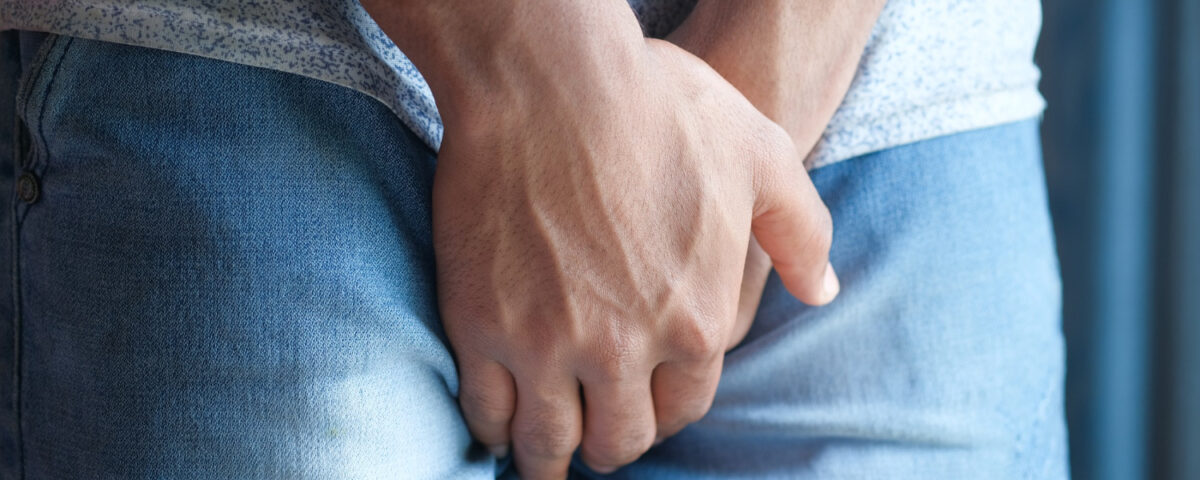When we talk about Peyronie’s disease, attention almost always focuses on the obvious symptoms: penile curvature, pain with erection, and erectile dysfunction. Yet a less-discussed but equally important question troubles many men: can Peyronie’s disease cause urinary problems? The short answer is yes.
Although it is not the most common symptom, a significant percentage of patients experience changes in urination. It’s crucial to distinguish these disturbances from simple painful urination (dysuria), which can stem from unrelated issues like urinary tract infections. In this article, we’ll explore how Peyronie’s impacts urinary function, the types of urinary symptoms that can occur, and—most importantly—the advanced diagnostic and therapeutic strategies available at Prof. Fabio Castiglione’s specialized clinics in London, such as the Erectile Dysfunction Clinic London.
What’s the link between Peyronie’s and urinary problems?
Peyronie’s disease (IPP, Induratio Penis Plastica) is a connective tissue disorder that leads to fibrous plaque formation in the tunica albuginea, the sheath around the corpora cavernosa. These plaques reduce local elasticity, causing the hallmark symptoms during erection: curvature, pain, shortening, and sometimes erectile dysfunction.
The exact triggers remain unclear, but repeated micro‑traumas to the penis—often during sexual activity—appear to spark abnormal healing in genetically predisposed men.
The two classic phases of Peyronie’s:
- Acute (Inflammatory) Phase: Lasts 6–18 months, marked by pain (with or without erection), evolving plaque formation, and progressive curvature.
- Stable (Chronic) Phase: Inflammation subsides, pain decreases or disappears, the plaque hardens, and curvature no longer worsens. More invasive treatments may be considered here if needed.
How Peyronie’s anatomy can disrupt urination
Reviewing penile anatomy clarifies the connection. The penis consists of three cylinders: two corpora cavernosa (fill with blood for erection) and the corpus spongiosum, which houses the urethra. When a Peyronie’s plaque forms in a strategic spot, three main mechanisms can compromise urination:
- Direct Urethral Compression
A ventrally located plaque (underneath) can press on the corpus spongiosum and urethra, narrowing the channel. Imagine squeezing a garden hose—the flow weakens or diverts. - Flow Deviation
A significant curvature, especially ventral or lateral, bends the urethra. This structural distortion can alter the direction and force of the urine stream, making it unpredictable. - Peri‑urethral Inflammation
In the acute phase, inflammatory spread around the plaque can irritate peri‑urethral tissues, triggering urgency and frequency.
What urinary problems can occur?
Urinary issues linked to Peyronie’s extend beyond mere discomfort. Patients may experience:
- Spraying or Deviated Stream, The jet is no longer straight or predictable, causing embarrassment.
- Weak or Intermittent Stream, Flow weakens and may start‑stop repeatedly (intermittent flow).
- Hesitancy, Difficulty initiating urination despite feeling the urge.
- Incomplete Emptying, A sensation of not fully emptying the bladder, leading to frequent returns.
- Urgency & Frequency, A sudden need to urinate often, day and night (nocturia).
- Post‑Void Dribbling, Involuntary dripping immediately after voiding.
These symptoms—collectively known as LUTS (Lower Urinary Tract Symptoms)—can significantly impact quality of life.
Can Peyronie’s disease cause urinary problems? Don’t ignore urinary symptoms. Get an accurate diagnosis from Prof. Fabio Castiglione in London. Call +447830398165.
FAQ: Your top questions answered

Q: Can Peyronie’s disease affect urination?
A: Yes. It can influence urination by compressing or bending the urethra. Not all men with Peyronie’s get urinary issues, but it’s a real possibility, especially with ventral plaques or severe curvature.
Q: What other symptoms does Peyronie’s cause?
A: Aside from urinary changes, Peyronie’s primarily causes penile curvature, erection pain, shortening, “hourglass” deformities, and erectile dysfunction (in >50% of cases). It also carries a heavy psychological burden—anxiety, relationship stress, and lowered self‑esteem.
Q: Is it ever too late to treat Peyronie’s?
A: Never. Treatment strategies differ by phase: in acute Peyronie’s, we aim to control inflammation and pain with conservative/regenerative therapies; in chronic Peyronie’s, we address established deformities with stronger interventions, up to surgery. Early specialist evaluation is key.
Q: Are urinary symptoms always caused by Peyronie’s?
A: No. Similar LUTS often come from BPH, prostatitis, or UTIs. A thorough differential diagnosis by an expert like Prof. Castiglione is essential.
Can Peyronie’s disease cause urinary problems? Don’t let this worry diminish your life. Contact Prof. Fabio Castiglione in London at +447830398165 for a comprehensive evaluation and personalized treatment plan.
Advanced diagnostics with Prof. Castiglione in London
To determine exactly how Peyronie’s affects your urination, a multi‑level assessment is required:
- History & Standardized Questionnaires: Use IPSS to quantify urinary symptoms and IIEF for sexual function.
- Physical Exam: Palpate plaque location, size, and consistency.
- 3D Dynamic Penile Ultrasound: After an induced erection, visualize plaque extent, measure curvature, assess blood flow, and examine urethral anatomy.
- Uroflowmetry: Non‑invasive test measuring flow rate and volume for objective data on obstruction.
From conservative care to regenerative solutions
Once diagnosis is clear, treatment is personalized:
Conservative & supportive strategies
- Oral agents—Vitamin E or pentoxifylline may offer limited benefit (BJU Int 2022) but can be part of a broader plan.
- Stretching & Traction Exercises—Manual stretching and daily use of traction devices for 3–6 months can counteract scar contracture if started early.
Regenerative & combined therapies
Prof. Castiglione leads in regenerative approaches:
- Low‑Intensity Shockwave Therapy (Li‑ESWT): Acoustic pulses break down plaque, reduce inflammation, and stimulate neoangiogenesis.
- P-Shocks (PRP + Shockwaves): His signature protocol combines Platelet-Rich Plasma injections with shockwaves. PRP—harvested from your blood—delivers concentrated growth factors that accelerate healing and remodel scarring. Shockwaves prime the tissue to maximize PRP uptake. P‑Shocks represent a leading non‑surgical option for both curvature and urinary symptoms.
- Intralesional Injections: Collagenase or verapamil injected into the plaque may “digest” fibrous tissue in select cases.
When is surgery the best choice?
In stable, severe curvature (>60°) that prevents intercourse and resists other therapies, surgery remains the gold standard:
- Nesbit Plication: Shortens the longer side to straighten.
- Plaque Incision/Excision with Grafting: Removes plaque and covers the defect with graft material to preserve length.
- Penile Prosthesis Implant: Definitive solution for men with severe erectile dysfunction and Peyronie’s—corrects both curvature and erection.
Conclusion: A clear answer and a tailored solution
Yes, Peyronie’s can lead to urinary problems. Ignoring this link means overlooking a major aspect of men’s well‑being. The good news: with accurate diagnosis and a spectrum of treatments—from traction devices and regenerative P-Shocks to precision surgery—you can effectively manage both penile deformity and urinary issues. Prof. Fabio Castiglione’s integrated approach in London ensures each patient receives a customized plan for their unique anatomy and function.


